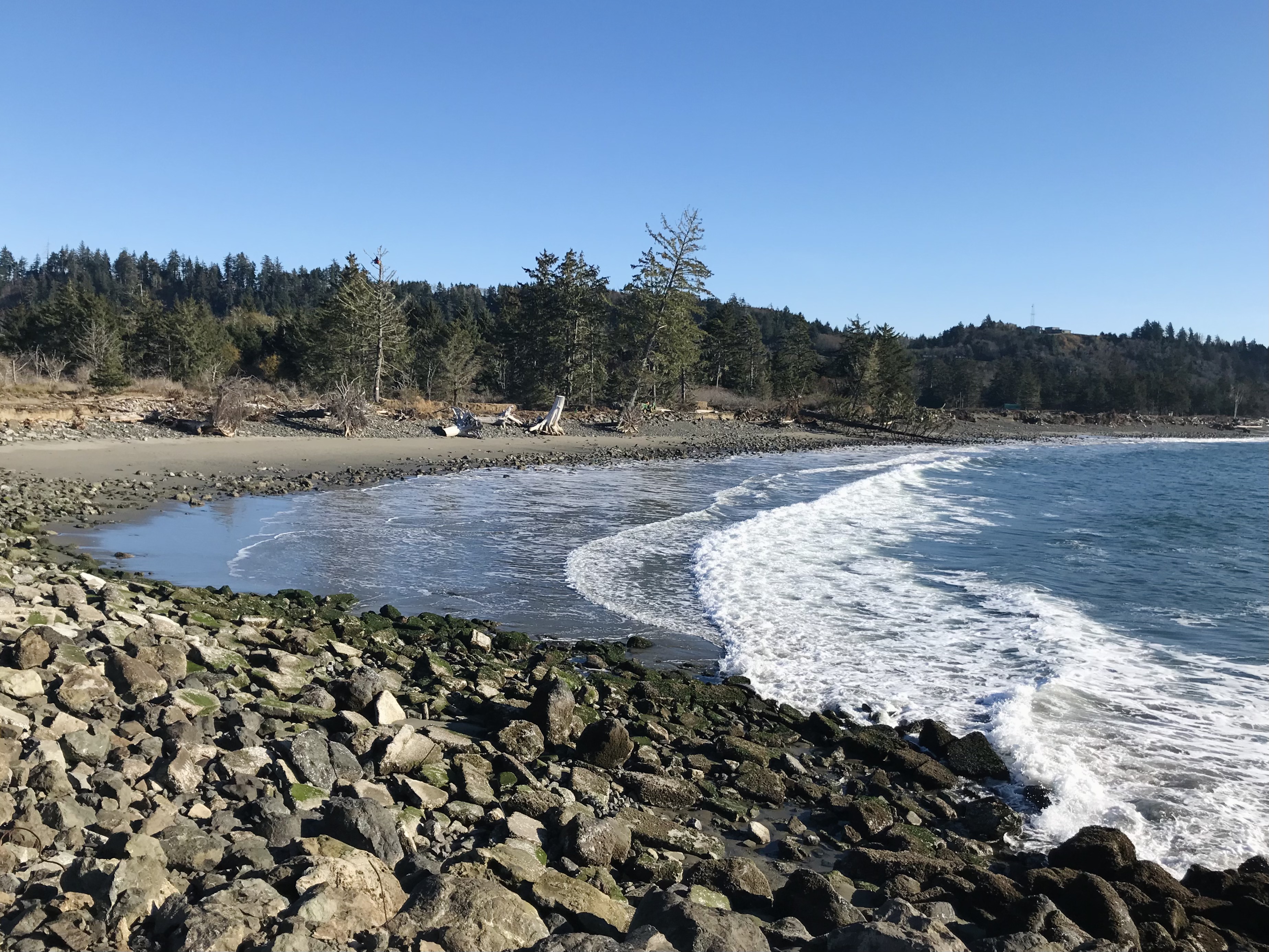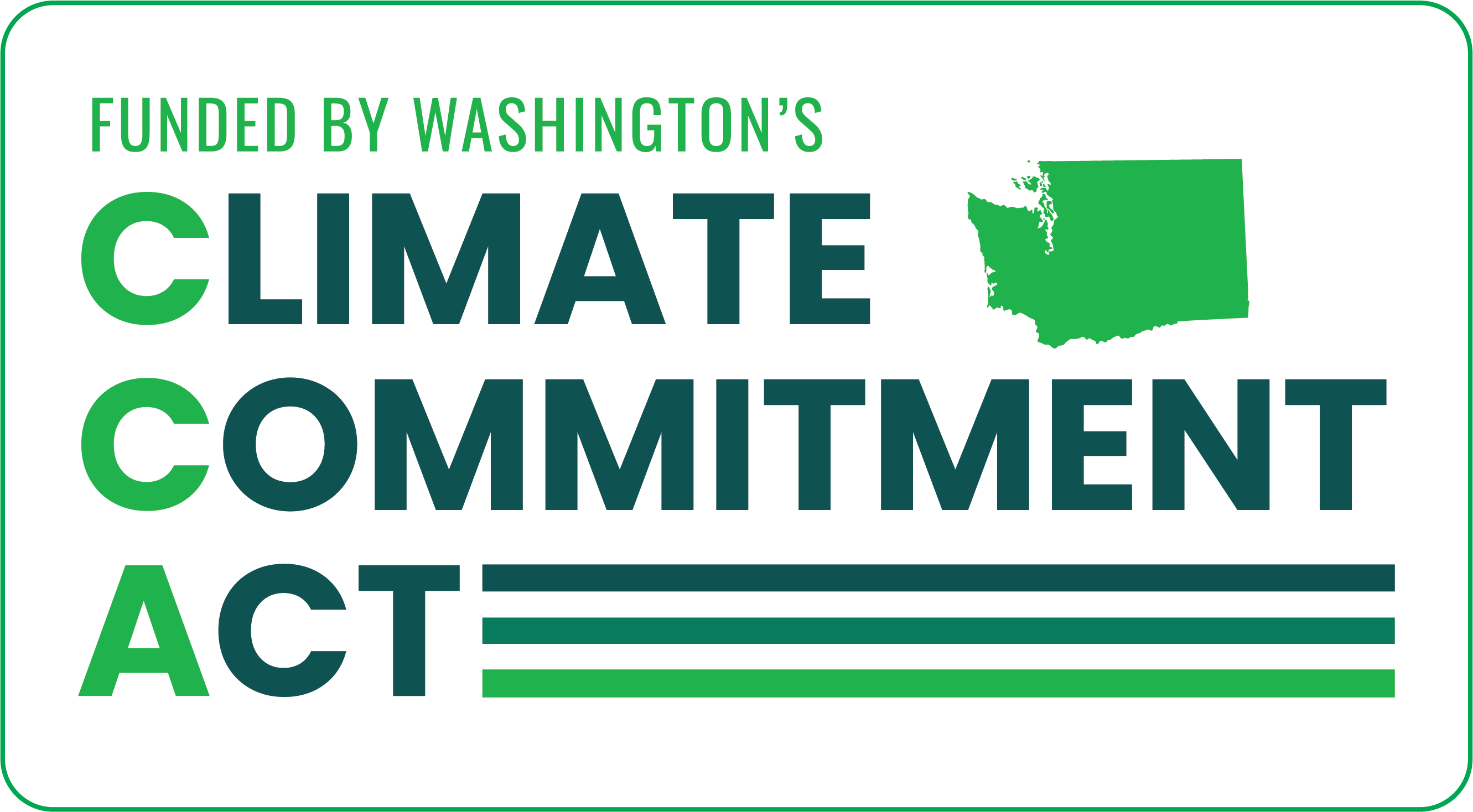Washington’s coastlines might be considered the canary in the coal mine for the impacts of climate change. Sea level rise, beach and bluff erosion, saltwater intrusion and coastal flooding are threatening roads, bridges and communities along the Pacific coast and shores of Puget Sound.
Last week, the National Oceanic and Atmospheric Administration announced a major new grant aimed at supporting climate resiliency projects to protect those Washington communities, infrastructure and habitats that are at risk.
The $73.6 million climate resiliency grant builds on more than 20 years of planning work by Ecology and a coalition of public agencies, Tribes, academic institutions and non-profit organizations. Together, they have investigated the steps needed to protect Washington’s coastal communities from climate-related hazards.
The funding was part of the Biden-Harris administration’s Climate Resilience Regional Challenge – a competitive $575 million program funded by the federal Inflation Reduction Act.
“This federal award recognizes years of hard work and planning by many partners in Washington to address the climate-related hazards that threaten our state,” said Ecology Director Laura Watson. “This funding gives us the ability to act quickly so that we can move these climate resiliency projects off the shelf and onto the shore to address the threats climate change poses to homes, businesses, marine ecosystems and Washington’s economy.”
Watson said the federal grant will fund several shovel-ready climate resiliency projects in the Snohomish River delta, the northwest Olympic Peninsula, and along the Pacific coastline. The award will also pay for a $3.4 million resiliency-focused grant program for coastal Tribes, establish a $3.4 million coastal resiliency fellowship program and invest $1.2 million to help develop climate resiliency career pathways for Washingtonians.
Snohomish River delta and San Juan County
Chinook March in Snohomish County along Ebey Slough. Photo courtesy Washington Department of Fish and Wildlife
Of the $73.6 million Climate Resilience Regional Challenge grant, approximately $22 million will be used to complete projects in the Snohomish River delta, including $16.7 million to Snohomish County to restore 430 acres of tidal wetlands at Chinook Marsh, and other work to improve flood resiliency, and protect critical infrastructure in the county.
Snohomish Conservation District will use $2 million to improve climate change resilience and reduce flood risks for 400 acres of productive farmland between Ebey and Swans Trail sloughs in the Snohomish River watershed. The conservation district will also design projects to boost watershed resiliency and improve salmon-rearing habitat in Swans Trail Slough.
The Tulalip Tribes will invest $500,000 to conduct community workshops aimed at identifying and developing projects to reduce flood risk, increase agricultural resiliency, provide recreational opportunities, and restore critical salmon habitat on more than 6,000 acres of Tribal land containing transportation, commercial, agricultural and residential infrastructure.
The Washington Department of Fish and Wildlife will use $2 million to promote a community-led vision for ecosystem restoration on Spencer Island, including constructing an accessible, elevated boardwalk to increase recreational access for more people.
In San Juan County, the Samish Indian Nation will use $499,000 in partnership with Friends of the San Juans to boost community and shoreline resiliency to sea level rise while conserving ecological and cultural priorities and values.
North Olympic Peninsula
The Washington State Department of Transportation (WSDOT) is receiving $24.8 million to address climate change-related hazards threatening State Route 112, located on the north Olympic Peninsula. The highway is one of Washington’s most risk-prone transportation corridors. Portions of SR 112 are routinely impacted by flooding, landslides, shoreline erosion and washouts. The highway links the Makah Reservation, remote communities for the Lower Elwha Klallam Tribe, and the towns of Pysht, Clallam Bay and Neah Bay – but when SR 112 is closed, there are few safe, available detour routes. WSDOT will work with the Makah Tribe to assess the network of area logging roads to find possible access alternatives and develop safer detour routes. The Tribe and WSDOT will also work together to design nature-based approaches to address sea level rise and coastal flooding threats to SR 112 while enhancing salmon habitat and recovery.
Pacific coast

A dynamic revetment to address erosion in North Cove beach in Willapa Bay. Photo by Olivia Zimmerman, Ecology
Nearly $15 million will fund projects tackling coastal erosion and sea level rise in Pacific and Grays Harbor counties. Pacific Conservation District is receiving $14.3 million to restore a large section of Willapa Bay’s north shoreline by strategically placing natural material – cobbles, gravel, and pebbles – to create cobblestone berms along the backshore of the beach. Complemented by large, assembled wood structures and planted native vegetation, the project will help reverse chronic coastal erosion.
Pacific and Grays Harbor conservation districts will also work to improve stormwater and drainage infrastructure along the Grayland Plains shoreline. In addition, WSDOT will use $600,000 to retrofit an existing sea groin along State Route 105. Groins are engineered structures perpendicular to the shoreline that are designed to inhibit the movement of beach sand.
Climate Commitment Act funding
The state Climate Commitment Act (CCA) supports Washington’s climate action efforts by putting cap-and-invest dollars to work reducing climate pollution, creating jobs and improving public health. CCA funding has been instrumental in building the state’s capacity to work closely with local and Tribal communities to identify and develop local climate resiliency projects. CCA funding also supported Ecology’s efforts to apply for the Climate Resilience Regional Challenge grant in partnership with nine other state agencies, five local governments, four Tribal governments and organizations, two academic institutions, and six non-governmental entities.

